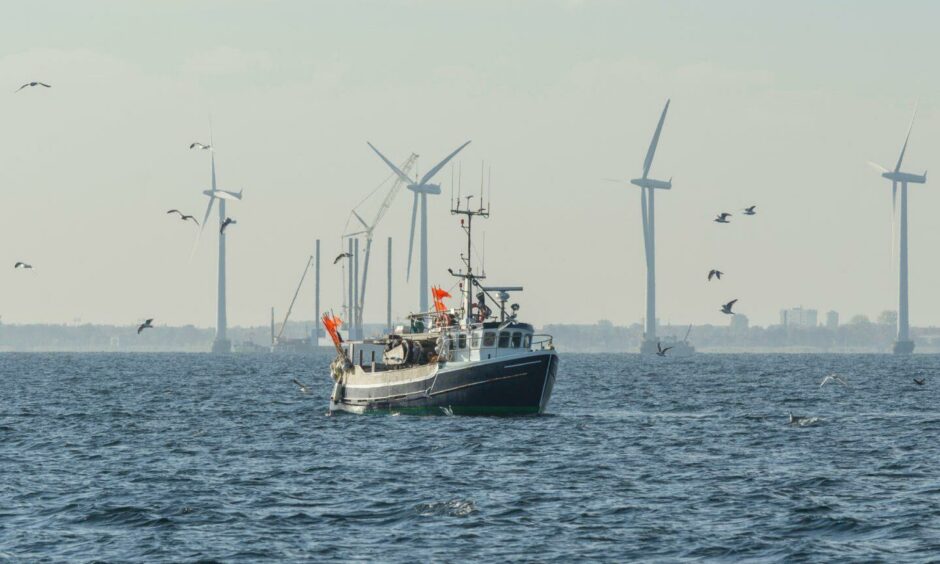
Representatives for Shetland’s fishing industry say they are being ignored in the drive to develop new wind farms off the islands, and took aim at the latest ScotWind clearance round.
Addressing a session during the parliamentary Westminster Energy, Environment & Transport Forum policy conference, Shetland Fishermen’s Association (SFA) executive officer Daniel Lawson said his industry had “big concerns” over the UK’s plans for renewables off the islands.
Mr Lawson said that the sector and local communities had historically been given “special consideration” when planning oil and gas developments on and around the islands, but that the recent push for offshore wind had seen many protections “flung by the wayside”.
“All of the things we saw with the onset of oil – protection, partnership, working consideration, consultation, compensation – they’ve all been largely abandoned so far in this rush towards offshore wind development,” he told delegates.
Mr Lawson said the organisation, which represents 115 member vessels, was dismayed by news of the latest round of offshore wind licensing as part of the Crown Estate Scotland’s ScotWind clearing process.
Ocean Winds, Mainstream Renewables Power and ESB Asset Development secured rights to build 2.8 gigawatts (GW) of capacity across three licence blocks in the NE1 area east of Shetland.
The capacity adds to the 24.8GW already secured in the initial ScotWind round in January, and will generate a further £56 million in option fees to the government.
However, Mr Lawson said the areas in question represented “prime fishing grounds”, vital not just to Shetland but to national and international fishing.
“We told ministers, we told officials, we told developers: this is prime fishing grounds – not just for Shetland boats, not just for Scottish boats, but for the international fleets with permission to fish in UK waters,” he added.
“So it was disappointing news last week to find out that we are getting these three offshore wind farms for the price of one.”
Shetland’s ‘greatest asset’
Mr Lawson said the industry was “Shetland’s greatest economic asset” – above both the oil and gas and renewables sectors – with a local fleet that is directly worth £130m a year to the islands.
Over 30% of all the fish landed by all UK fishing boats is caught within 50 miles of Shetland, and the area is responsible for 12% of all fish landed in the UK.
Mr Lawson said that “national and local marine plans, which all state the existing commercial fishing activity should be protected, appear to have been flung by the wayside,” and warned that “not nearly enough research” has been done into the effects of electricity cables on fishing grounds and fish stocks.
Looking at the wave of ScotWind projects in particular, he called for developers and regulators to work together to ensure efficient spatial planning.
In particular, he pressed the need for projects to leave suitable passage corridors for vessels and to build shared cable corridors that minimise the use of seabed space, rather than a potential “web” of networks if developers work independently.
He also recommended the use of tension leg platforms in floating wind foundations, which use vertical mooring lines. These again require less space than other solutions, which often rely on longer, trailing mooring lines, limiting the area navigable by fishing vessels.
The organisation has been warning of the effect of poor marine spatial planning for some time, concerned that the increasing spread of offshore wind acreage means the industry risks being “crowded out.”
Moreover, the SFA has called for adequate compensation payments to fishers if their access to fishing ground is curtailed during construction.
“For onshore wind we have community benefit payments. For offshore wind, we need something similar – and the fishing industry is just about the only community that you’ll find out there,” he said.
Early discussion
Speaking later in the session Fergus Ewing, MSP and convener for the Cross-Party Group in the Scottish Parliament on Oil and Gas said it was “absolutely essential” to have the most early discussions in detail about cable pathways with the fishermen.
“They were there first, they will probably be there last and they deserve to be heard. Not least because of the risk to safety on operational matters where there are cables on the seabed or beneath the sea surface,” he continued.
“They should never be forgotten in the deliberations.”
Concluding his own remarks, Mr Lawson asked for “help, consideration and protection” of the marine sector to ensure it has a sustainable future.
“Oilfields expire, wind farms have a set lifespan, technology advances, but fishing can be here forever,” he noted.
“When things get rushed, mistakes are made, and in this case it’s Shetland fishermen, the whole of the Shetland community, that will pay the price.”
Recommended for you
